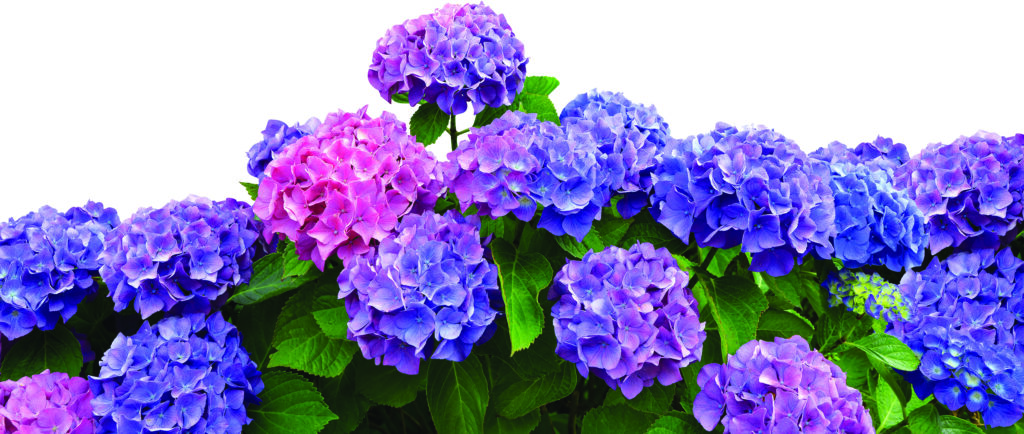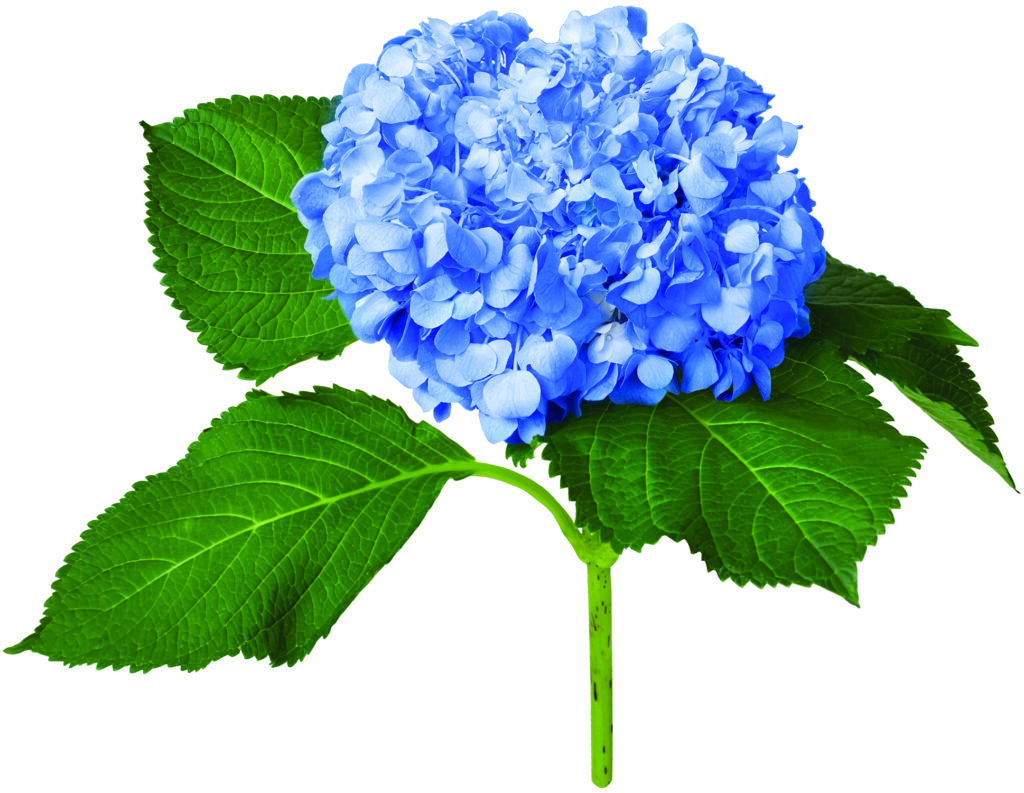All over Alabama this month, puffy orbs in an array of pink and blue hues should be turning Alabama into a confection-colored hydrangea wonderland. Sadly, the Arctic blast in December 2022, coupled with frigid temperatures earlier this year, may adversely affect this summer’s display but plenty of other hydrangeas are more than ready to step in and amaze us.

The Hydrangea genus includes more than 70 species of flowering plants native to Asia and the Americas, but only a handful of these are used in gardening and landscaping. According to Maria Pacheco, grounds specialist for the Alabama Nature Center and Historic Lanark in Millbrook, that list includes the following five hydrangea species, all of which work well in Alabama.
- Bigleaf (Hydrangea macrophylla): Mophead and lacecap types; varying shades of pink or blue flowers; hybrids available in additional colors; bloom from early June to late July and sometimes into late fall.
- Panicle (Hydrangea paniculata): Chartreuse green to pink ‘Limelights’ and bright white peegees; bloom late summer into fall.
- Oakleaf (Hydrangea quercifolia): Our state wildflower; native to the Southeast; elongated white flowers that often fade to pink; bloom early May through late July.
- Smooth (Hydrangea arborescens): Native to the Southeast; large white flowers; bloom July into the fall.
- Climbing (Hydrangea barbara): Several Asian climbing species are available but H. barbara is native to the Southeast; small, lacey white flowers; bloom early May through late June.
Of these, the bigleaf mopheads are most commonly associated with southern yards and landscapes, and they have been the gateway species for many a hydrangea aficionado, including Pacheco and Auburn hydrangea guru Dale Peterson, whose superb collection of more than 450 hydrangeas began almost three decades ago with the purchase of a single mophead.
“It was one color when I bought it and the next year it was a different color,” he says. As he researched this intriguing pH-related happenstance, Peterson stumbled upon the Alabama Hydrangea Society. He also soon discovered the many delights of growing and propagating hydrangeas and the many friends to be made within the hydrangea community.
Mopheads also hold a special place in Pacheco’s heart. She loves all kinds of hydrangeas but mopheads “were the first ones I learned to propagate,” she says. “That was exciting! And they are so easy to dry and use for arrangements or crafts.”

But Alabama Hydrangea Society President David Doggett cautions that here in Alabama, “mopheads can break your heart. Too often, our fluctuating temperatures in early spring cause them to break dormancy too early and the next freeze then damages the blooms,” he says.
That may be the case this year because of those frigid late 2022 and early 2023 temperatures. That doesn’t mean our mopheads are dead or won’t flower at all, just that they may not put on their usual show. But plenty of other hydrangeas are ready to step in, especially those with deep roots in our state.
“The hydrangea that must feel most at home in Alabama is the oakleaf hydrangea,” Doggett says. “I like to say that Alabama is ‘ground zero’ for oakleaf hydrangeas because so many of the cultivars that we enjoy have been discovered in Jefferson, Shelby, Blount and Etowah counties.
“They (oakleafs) love the heat,” he says, adding the native smooth hydrangea is another well-suited choice because it is “weather-proof.”
Many new cultivars, developed from both native and Asian species, have also been developed that perform extremely well in our climate and offer diverse color and size options and longer bloom times.
Ready to embrace the wonderland of hydrangeas? Here are a few tips from the experts to get you started.
“Go to a nursery and walk around in the hydrangea section,” Pacheco says. “Look at the way they grow, feel the leaves and see what you are drawn to. Find out which variety is best suited for your garden. Do you like white flowers, pink or blue? Do you like something small or something big? Remember that you’re going to be living with this plant and hopefully caring for it for a long time, see what is special to you.”

Peterson’s advice is to think like a real estate mogul: “Planting is all about location, location, location,” he says. Pick a site that fits the plant’s needs. “If you’re planting mopheads, you need a site with morning sun and afternoon shade, and it needs to be planted on the north and east side of the house to avoid too much sun.” If it’s a different species that can take more sun, adjust accordingly to meet its needs. He also suggested amending the soil so it’s nutrient-rich and well-draining and use a timed-release fertilizer once a year.
Like Pacheco and Peterson, Doggett loves how easy hydrangeas are to propagate, but he noted that many of the newer cultivars are patented or trademarked, which prevents them from being propagated for at least 20 years. However, he said, lots of the best-in-class and classic cultivars are now back in the public domain.
Now is also a great time to immerse yourself in hydrangeas by wandering through them. Pacheco is hosting Lanark’s annual Hydrangea Fest on June 3, an event that will feature tours, talks and a plant sale. (Visit alabamawildlife.org for more information.)
Hydrangeas are also growing in most public gardens including one extra special hydrangea wonderland, Aldridge Gardens in Hoover. (Visit aldridgegardens.com) Aldridge Gardens is home to the gorgeous “Snowflake” oakleaf hydrangea, which was developed and patented by the father/son nurserymen team of the late Loren and Eddie Aldridge. It’s also where the Alabama Hydrangea Society meets five times a year “to foster, to promote, to educate, and study the Genus Hydrangea.”

“Basically, we really just love hydrangeas and like gathering with like-minded gardeners,” Doggett says. Not only are new members welcome to join the society and attend meetings, the AHS website (AlabamaHydrangeaSociety.org) is full of information on growing hydrangeas, as is the Alabama Cooperative Extension System website at aces.edu.
Katie Jackson is a freelance writer and editor based in Opelika, Alabama. Contact her at katielamarjackson@gmail.com.





